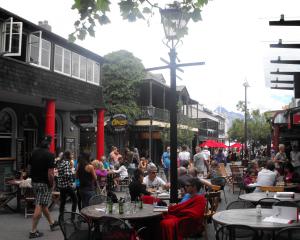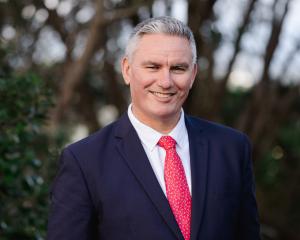A seriesof body blows in the past year has forced tourism companies to rethink the way they do business.
Last year, it was soaring oil prices and a strong currency which dented demand; now it is lower visitor numbers because of the global credit crunch which, according to an analysis by publicly listed tourism operator Tourism Holdings (THL), could result in fewer aviation and tourism operators in New Zealand.
The drop in visitors was also causing companies to change the way they priced their products and how tourists bought them, with many buying directly from operators at the last minute to take advantage of special prices.
THL warned that price volatility would hurt some companies.
"Companies without strong balance sheets will not survive this current pricing and yield upheaval."
The reality was that the number of tourists visiting New Zealand has been falling for the past year and the share price of listed tourism companies on both sides of the Tasman have similarly taken a battering, falling by up to 74% in the year to April 9.
Statistics New Zealand figures show visitor numbers in February were down 9% compared with a year earlier and while numbers from Australia were up, arrivals from other key markets - the United Kingdom, United States, Korea, Japan, China and Hong Kong - were down.
In the year to February 2009, 2.425 million tourists visited New Zealand, down 60,000 or 2% on the previous year.
Forsyth Barr investment adviser Suzanne Kinnaird said the drop was similar to that following the 1998 Asian crisis, but she believed investors had oversold the stocks given tourism companies could rebound quickly.
Key New Zealand operators THL and Air New Zealand had relatively high fixed costs which, given declining visitor numbers, had resulted in a difficult 18 months.
Air NZ had reacted quickly to reduce its fleet and seat capacity, while favourable foreign exchange hedging and lower fuel costs had protected its earnings.
However, THL committed to increasing its motorhome fleet in March last year which had resulted in a severe earnings downgrade.
Forsyth Barr has reduced its forecast normal full-year profit for THL from $8.5 million to $1.7 million, including an abnormal gain of $4.5 million.
Ms Kinnaird believed Air NZ had adjusted its business model, had the financial strength and product offering to manage its way through the difficulties and would benefit from foreign exchange gains.
Given this, the broker had increased its forecast profit for Air NZ this year from $49.8 million to $112.9 million.
Ms Kinnaird said both Air NZ and THL had strong balance sheets, but the unknown was when the tourism industry would pick up.
She remained confident about the long-term picture.
"Despite the current weakness in global travel trends, we are confident that tourism growth will resume towards its long-term trend of about 5% a year."
Last November, the chairman of Queenstown tourism operator Skyline Enterprises, Barry Thomas, forecast a decline of up to 15% in international tourist numbers over summer.
He said then that business was starting to slow and that the financial result this year would not exceed that of last year given the economic upheaval, growing domestic unemployment, rising inflation and the trend from the first six months' trading.
Auckland International Airport (AIA) was also preparing for a more rocky path ahead by adopting a growth strategy.
ABN Amro Craigs broker Chris Timms said that, as an investment, the company's extensive property portfolio gave it another income stream which would help redress falling passenger numbers.
Auckland was also New Zealand's main gateway for international visitors.
"Even if we get a downturn in visitor numbers, we will still get people coming to New Zealand and they will come through AIA."
In a presentation to brokers, AIA management said it had a two-phase strategy of watching spending and being in a position to seize opportunities as they arose.
Initially, it has cut capital expenditure, carefully invested in its retail and property sectors, in route retention and development, tourism and cargo promotion and also in short-haul markets.
The next phase would involve careful investment in aero division capacity and service, and the company would focus on major markets and invest strongly in its retail and property investments while also expanding the scope of the business.
AIA was perfectly positioned, with forecasts the Asia Pacific region would grow 7.2% year in the next 19 years, the greatest growth rate of any region and well ahead of second placed North America on 2.8%.
The airport operator has also targeted expanding its share of low-cost airlines in which it was a distant second to Christchurch International Airport.
Low-cost airlines boosted traffic and passenger volumes and were widely seen as underpinning growth in air travel.
Competition for international tourists would come from Australia, but Australia would also remain the source of many tourists to New Zealand.
However, AIA has been losing its dominance of transtasman arrivals to Christchurch airport.
Forsyth Barr expected AIA's full-year result to be at the lower end of its forecast profit of $100 million to $110 million, given solid revenue growth from across its portfolio.





